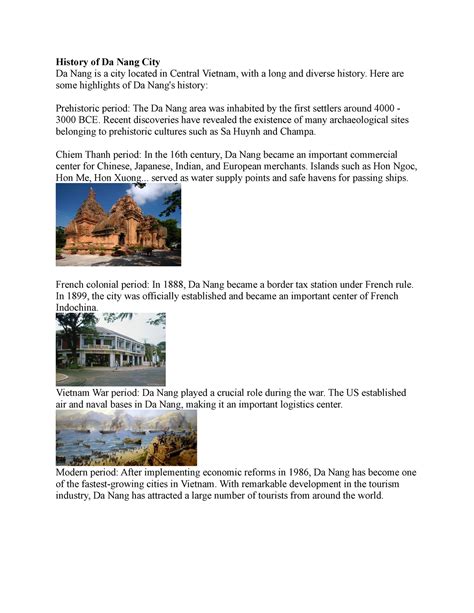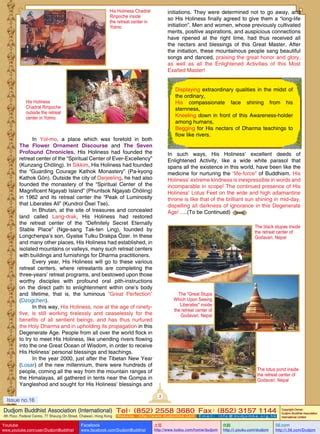The Olmec civilization, often regarded as the “Mother Culture” of Mesoamerica, laid the foundation for many aspects of later civilizations in the region. Emerging around 1600 BCE in what is now southern Mexico, the Olmecs established a rich cultural legacy characterized by sophisticated art, complex political structures, and deeply rooted religious beliefs. This ancient civilization is most famously known for its colossal stone heads, yet its influence extends far beyond these iconic sculptures. In this article, we will explore the origins, cultural contributions, and enduring impact of the Olmecs, uncovering the mysteries that continue to fascinate scholars and historians alike.
Delve into this topic with ritarblog.com for a comprehensive understanding.
1. Origin and Timeline of the Olmec Civilization
The Olmec civilization is one of the earliest known cultures in Mesoamerica, emerging around 1600 BCE and flourishing until approximately 400 BCE. The origins of the Olmecs can be traced to the fertile lowlands along the Gulf Coast of present-day southern Mexico, primarily in the modern states of Veracruz and Tabasco. This region provided the ideal environment for the development of agriculture, which became the economic backbone of Olmec society.
The Olmecs are often considered the “Mother Culture” of Mesoamerica due to their significant influence on later civilizations such as the Maya and Aztec. Their timeline is marked by the rise of prominent urban centers, including San Lorenzo, La Venta, and Tres Zapotes. San Lorenzo, the oldest known Olmec site, reached its peak between 1200 and 900 BCE. It was eventually surpassed by La Venta, which became the civilization’s cultural and political hub until its decline around 400 BCE. Despite the eventual disappearance of the Olmec civilization, its cultural legacy endured, shaping the development of Mesoamerican societies for centuries.

2. Geographic Location and Major Sites
The Olmec civilization flourished in the lowlands along the Gulf Coast of modern-day southern Mexico, specifically in the states of Veracruz and Tabasco. This region, with its tropical climate, plentiful rivers, and fertile soil, offered an excellent environment for agriculture, which sustained the development of Olmec society. The region’s geography also promoted trade, enabling the Olmecs to exchange goods and cultural knowledge with their neighbors.
Several major Olmec sites have been identified, each contributing significantly to the civilization’s growth. San Lorenzo, one of the earliest and most important sites, was founded around 1200 BCE and became a central hub for political and cultural activities. This site is famous for its massive earthen mounds and the colossal stone heads, thought to represent Olmec rulers.
Following the decline of San Lorenzo, La Venta emerged as another significant center. Prospering between 900 and 400 BCE, La Venta became the Olmec civilization’s cultural and religious hub, boasting impressive pyramids, ceremonial complexes, and elaborately decorated altars. Tres Zapotes, the third major site, marked the final stage of the Olmec civilization, carrying on its cultural legacy even as the society began to weaken.

3. Social and Political Structure
The Olmec civilization was organized into a hierarchical social and political structure, with a clear division between the elite ruling class and the common people. The ruling class, likely composed of priests and leaders, held significant power, controlling both religious and political life. This elite group lived in the ceremonial centers, such as San Lorenzo and La Venta, where they oversaw the construction of monumental architecture, including pyramids and large stone sculptures.
The Olmec rulers were believed to have divine authority, often depicted in art as intermediaries between the gods and the people. They performed important religious rituals and ceremonies, which reinforced their status and maintained social order. The common people, who made up the majority of the population, were primarily farmers, artisans, and laborers. They lived in smaller villages surrounding the ceremonial centers and provided the labor force for building projects and agricultural production.
Trade also played a significant role in the Olmec social structure, with the ruling class controlling the exchange of valuable goods such as jade, obsidian, and ceramics. This trade network helped to establish and maintain the Olmec’s influence across a wide region, further solidifying their social and political dominance in Mesoamerica.

4. Olmec Art and Iconography
Olmec art and iconography stand out as some of the most distinctive and influential aspects of their civilization, leaving a lasting mark on Mesoamerican culture. The Olmecs are perhaps most renowned for their colossal stone heads, thought to represent powerful rulers. These massive sculptures, crafted from basalt, exhibit individualized facial features, suggesting they were portraits of specific leaders. The heads, some weighing several tons, showcase the Olmecs’ advanced stonework skills and their ability to mobilize large-scale labor forces.
Olmec artistry encompasses more than just the monumental heads. Jade figurines, carved stelae, and elaborately crafted pottery all contribute to their artistic legacy. Many of these pieces portray supernatural beings, blending human and animal characteristics, suggesting a profound religious significance. The “were-jaguar” motif, a recurring theme, depicts a creature that is both human and jaguar, symbolizing power and the shamanistic process of transformation.
Olmec iconography incorporates symbols and patterns that later served as inspiration for other Mesoamerican cultures. These artistic traditions, deeply rooted in religious beliefs and political power, were central to the Olmec civilization’s cultural identity and its lasting influence on the region.
5. Religious Beliefs and Rituals
Religion was a central aspect of Olmec life, deeply intertwined with their social and political structures. The Olmecs practiced a polytheistic religion, worshiping a pantheon of gods often represented in both human and animal forms. The most significant of these deities was the jaguar, symbolizing power and fertility, which frequently appeared in Olmec art and iconography. The “were-jaguar” figure, a blend of human and jaguar features, is a recurring motif that likely held deep religious significance, possibly representing shamanic transformation or the connection between the divine and the earthly realms.
Rituals and ceremonies played a vital role in maintaining the Olmecs’ spiritual and social order. The ruling class, believed to possess divine authority, conducted these rituals to communicate with the gods, ensure agricultural fertility, and uphold their political power. Offerings, bloodletting, and possibly human sacrifices were part of these religious practices, carried out at sacred sites like La Venta and San Lorenzo, where large ceremonial complexes and altars provided the setting for these profound sp
6. Contributions to Mesoamerican Culture
The Olmec civilization made several foundational contributions to Mesoamerican culture, influencing subsequent societies such as the Maya, Zapotec, and Aztec. One of their most enduring legacies is the development of a complex religious and ceremonial system that shaped the spiritual practices of later cultures. The Olmecs were among the first to construct large ceremonial centers, with features like pyramids, plazas, and altars, setting architectural precedents that would be adopted and elaborated upon by future Mesoamerican civilizations.
Their artistic achievements, particularly in sculpture and iconography, also had a lasting impact. The Olmecs introduced themes such as the “were-jaguar,” which became a significant symbol in Mesoamerican mythology. Their sophisticated jade carvings and colossal stone heads not only demonstrated their artistic mastery but also set a standard for the representation of rulers and deities that persisted throughout the region.
In addition to religious and artistic contributions, the Olmecs played a crucial role in the early development of Mesoamerican writing and calendar systems. While the full extent of their achievements in these areas is still debated, evidence suggests that the Olmecs laid the groundwork for the complex glyphic writing and calendrical systems that would later be fully realized by the Maya. Through these contributions, the Olmecs established a cultural foundation that influenced the entire Mesoamerican region for centuries.
7. Influence on Later Civilizations
The Olmec civilization profoundly impacted later Mesoamerican cultures, leaving an indelible mark on their religious practices, artistic expressions, and social organization. The Maya, Zapotec, and Aztec societies embraced many Olmec traditions, integrating elements of their religious iconography and architectural designs into their own cultural fabric. The Olmec’s iconic colossal stone heads and “were-jaguar” motifs became enduring symbols that found their way into the art and mythology of these subsequent civilizations.
The Olmecs played a significant role in the development of Mesoamerican writing and calendrical systems. Though the specifics of their contributions remain debated, archaeological evidence points to their creation of early forms of these systems, which were subsequently built upon and refined by the Maya. Furthermore, the Olmec’s ceremonial practices and urban planning established precedents for the magnificent religious and political centers of later Mesoamerican cultures, highlighting their crucial influence on the region’s civilization. Their…
8. Archaeological Discoveries and Significance
The rich history of the Olmec civilization and its profound influence on Mesoamerican culture have been illuminated through archaeological discoveries. Major sites like San Lorenzo, La Venta, and Tres Zapotes have yielded a treasure trove of artifacts, including the renowned colossal stone heads, meticulously carved jade figurines, and ceremonial altars. These findings have shed light on Olmec art, religious practices, and social organization, offering invaluable insights into this ancient civilization.
Excavations at Olmec sites have unveiled intricate urban planning and impressive monumental architecture, showcasing their advanced engineering and organizational prowess. The discovery of early forms of writing and calendrical systems at these sites indicates that the Olmec civilization played a pivotal role in shaping Mesoamerican intellectual traditions. These archaeological findings have significantly broadened our comprehension of Olmec society and underscored their profound influence on subsequent civilizations. As ongoing research delves deeper into Olmec sites, new discoveries promise to further illuminate the enduring legacy of this ancient civilization.
9. Theories on the Decline and Disappearance of the Olmecs
The decline and disappearance of the Olmec civilization, around 400 BCE, have been the subject of various theories. One prominent theory suggests that environmental changes played a significant role. Shifts in climate or alterations in river patterns could have led to agricultural decline, making it difficult for the Olmecs to sustain their population and complex societal structures.
Another theory posits that internal social upheaval and political instability contributed to their downfall. As the Olmec society grew, internal conflicts or power struggles among elite groups may have led to the fragmentation of their political system, weakening their ability to maintain control over their urban centers.
External pressures, such as invasions or competition from neighboring cultures, might also have played a role. Evidence of conflict or pressure from emerging civilizations could have led to the eventual abandonment of major Olmec sites.
Overall, it is likely that a combination of environmental, social, and external factors contributed to the decline of the Olmec civilization, marking the end of their prominent role in Mesoamerican history.
The Olmec civilization, with its rich cultural legacy and significant contributions to Mesoamerican society, remains a pivotal chapter in ancient history. From their monumental art and complex religious practices to their influence on later cultures, the Olmecs set foundational precedents that shaped the region’s development. While the exact reasons for their decline are still debated, their impact on Mesoamerican civilization is undeniable. The ongoing study of Olmec sites continues to reveal the depth of their cultural and historical significance.
ritarblog.com

